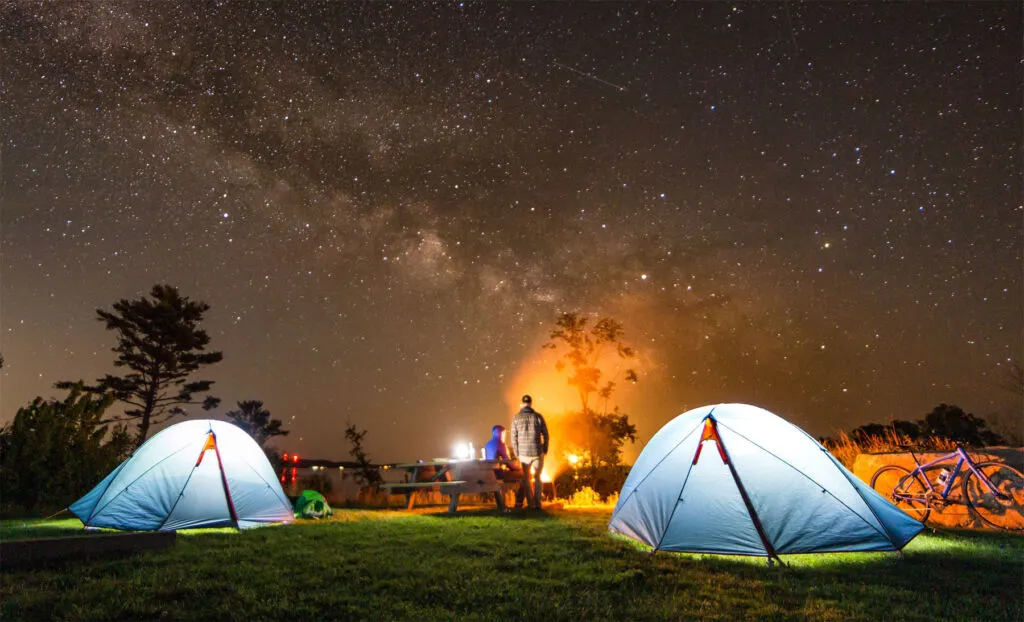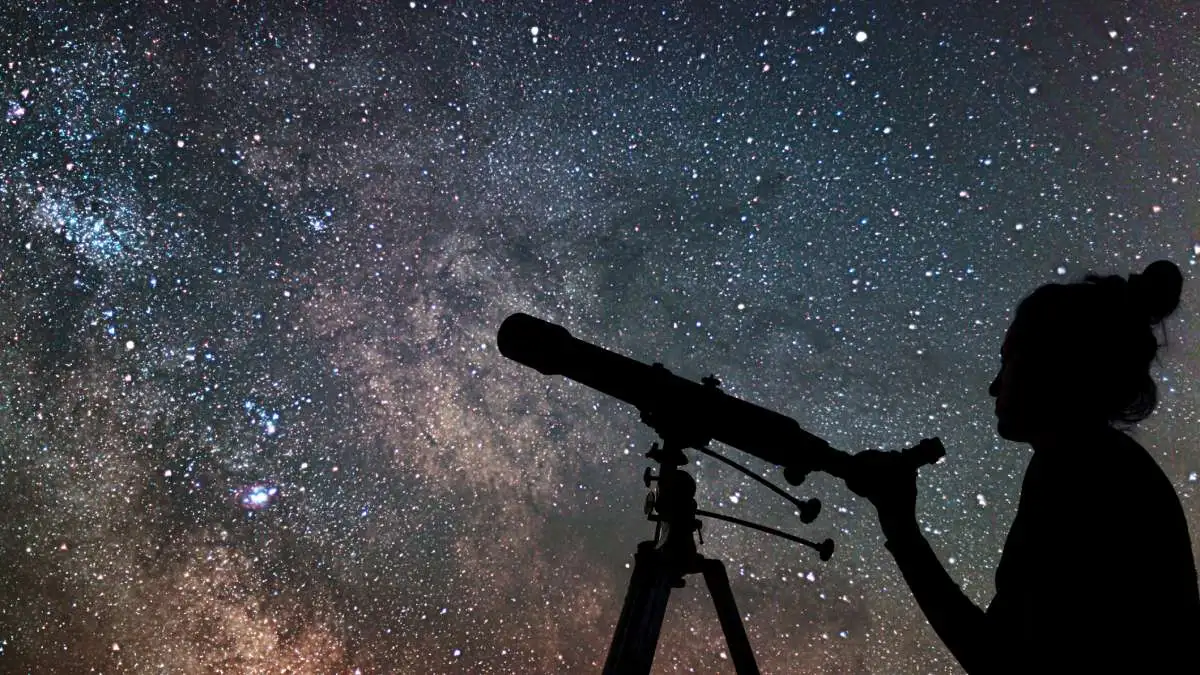The night sky is a source of awe and wonder for humans forever. The stars, planets, and galaxies scattered throughout the expanse above are as striking and enigmatic. If you’ve always yearned to get into astronomy and become a stargazer, this beginner’s guide is the one you need. In this work, we will offer you the advice and tools you need to get started on your trip around the heavens.
Whether you want to know and put a label on constellations, gaze at planets, or wander through the universe, we’ve got you covered. With the proper information and supplements at your hand, you can unravel the cosmos right from your very own yard. We will walk you through the principles from the various kinds of telescopes and binoculars to how to navigate through night . So, start with your telescope, put on your galactic investigating cap, and take your first step into the fantastic cosmos.

Benefits of Stargazing
In conclusion, stargazing is not only beneficial because of its outstanding beauty but also due to its calming effects. It instils a sensation of awe which leaves us feeling small but connected to something much more significant. It is a form of meditation, as it allows us to stop overthinking and achieve a state of complete silence.
It makes us think about the vast expanse of the sky and all the mysteries that it keeps. Stargazing inspires curiosity and learning. We want to find out not only the scientific facts about planets and galaxies but also their historical and mythological provenance. Overall, exploring the universe and pondering the questions of our humanity are only positive outcomes.
Essential Tools for Stargazing
To start your journey, however, be sure to have your tools ready. The most fundamental tool a stargazing hobbyist must acquire is a telescope; there are different types and sizes of telescopes used to accomplish varying goals. Refractor telescopes use lenses to collect and focus light whereas reflector ones use mirrors. Depending on your budget, observing objectives, and preference, you may pick one over the other.
In fact, binoculars are preferable for beginners due to fact that they have a broader field of view and are simpler to direct at objects. Additionally, purchase a star chart or planisphere that helps you “navigate the sky” and a red flashlight, as it saves your night vision. With these tools in place, you will make an excellent cosmic explorer.
Understanding the Night Sky in Astronomy
In order to fully enjoy the wonders of the night sky it’s important to know its components. The night sky is divided into the constellations, which are a groups of stars that create certain pattern or recognizable picture. The patterns have been named by ancient civilizations and often reflect mythological heroes or animals. To start your stargazing adventure, it’s great to learn at least the major constellations. Stars, in turn, are differentiated in their class by their intesity of shining. The most bright ones are classified as the first magnitude stars.
The brightness level is measured with the magnitude scale, the lower number – the brighter star. In addition, planets can sometimes be spotted in the sky too and they are quite easily recognizable, since their shining is very intense but not twinkle as stars does; Regardless of the components of the night sky, the knowledge of them can help to make the astronomy viewing experience more enjoyable and comprehensible.
Finding the Best Stargazing Locations
One of the key aspects that assure an almost perfect stargazing experience is the right location. Light pollution coming from cities might dramatically decrease the visibility of stars and other celestial bodies. Thus, it is best to travel outside the city and locate the darkest place possible. Many national parks, rural areas, and beaches might be a perfect choice . Moreover, the weather should also be taken into consideration. Ideally, the sky should be clear and dark without any clouds.
Always check the weather forecast and plan your future stargazing sessions in advance. Also, keep in mind the moon as various phases might not provide the perfect conditions for stargazing. A full moon might wash off the faintest stars and be an obstacle to many other bodies. Ideally, you can choose a moonless night for the perfect experience or a crescent moon if you find it beautiful.
Stargazing Tips for Beginners
When you are just getting started with stargazing, there are several tips and tricks that can help you enjoy the experience best. You should always go easy on the observer stain by allowing your eyes to adjust to the darkness. Make sure to wait for approximately 20-30 minutes, as your eyes adjust to the low lighting conditions, to fully function efficiently. Red flashlight works best since red light is not in opposition to night vision.
Regular rest for your eyes is a necessity, since stargazing can put a strain on your eyes. Always bring a jacket, since most of the time, you will be out until late, and temperatures fall. Lastly, have a notebook, or what many call a stargazing journal to write down all your observations and impression notes. This way, you will keep track of your progress on pwvip4d.

Identifying Constellations and Stars
Stargazing becomes even more exciting when you can recognize the constellations and stars adorning the sky. To begin, learn the major constellations that you can see based on the season. Consider the patterns that depict animals, mythological beings, or objects . A few major constellations ideal for beginners include Orion, Ursa Major, and Cassiopeia.
After identifying the major constellations, you may identify several stars in the constellations. You may utilize a star chart or a smartphone app to locate and identify stars. Constellations act as landmarks to assist in finding other stars and almost everything else within the sky. With time, you will learn how to recognize constellations and stars more quickly, making your stargazing session even more delightful.
Using Smartphone Apps for Stargazing
Stargazing can be made convenient through the use of smartphones. Some numerous applications and tools could help you identify the various stars, constellations or even track the ISS. Our favorite apps are SkyView , Star Walk and Stellarium amongst others. They offer an augmented reality view of the sky using your phone’s GPS and compass. You can install the apps on your phone, point to the sky at night, and on the screen will appear the names and positions of stars and constellations. The other apps even offer details of the given star, satellite information and astronomy events.
This way, you can enjoy more and easily find the ISS in the night sky.
Astrophotography Tips for Beginners
If you are interested in recording and capturing the night’s beauty, astrophotography is the answer. With astrophotography, you can record beautiful images and views of the stars, planets, and sometimes, galaxies. A camera with manual control and a sturdy tripod are necessary to shoot stills and avoid camera shake. Get an ideal location with little light pollution yet great visibility. You may also try using different camera intensities, exposure times, and ISO levels to see what is best.
You can start with lower exposure periods and gradually raise them to lengthen as you gain additional experience. Another thing you can do is purchase or use remote shutter release or employ the camera’s timer to prevent camera shakes. With time and practice, stars and galaxies are within your reach and imagination. Also, note that persistence and perseverance are crucial in the process. Astronomy is a discipline that has grown and will continue to develop profoundly.
Discover the night sky with care, know the trade tools and spend time in the darkness until things illuminate beyond your imagination. They include telescopes and a location far away from the town. The dark sky awaits for you, and hopefully, you will be in a better position with the help of the information I have offered you in this beginners’ guide to becoming an astronomer. Happy Gazing!
Also read: Hikone-Jo: Experience Japan’s Most Important Castle




